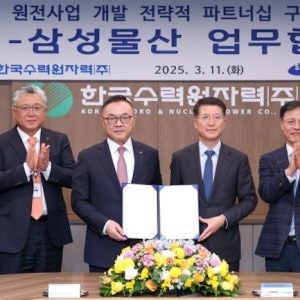Japan Nuclear Fuel Limited (JNFL) has announced that it will again postpone the scheduled completion of Rokkasho nuclear fuel reprocessing plant.
Construction of the plant began in 1993 and was scheduled to be completed by 1997, but persistent troubles forced the timeline to be pushed back 24 times.
In 2017, it was discovered that JNFL failed to carry out necessary inspections on an area of the plant for 14 years, resulting in nearly a tonne of rainwater pouring into a building housing an emergency diesel generator.
JNFL applied for the safety checks in January 2014, and the Nuclear Regulation Authority (NRA) approved its measures in May 2020. NRA then sought feedback from the public and concerned parties prior to formal approval. The feedback was largely critical, with some saying the country’s nuclear fuel recycling policy is already deadlocked, according to the NRA’s secretariat. The total project cost of the Rokkasho plant, from construction to its eventual decommissioning, is estimated to be JPY13,900bn ($130 billion).
In July, JNFL received NRA approval for modification of safety measures at Rokkasho “to meet new regulatory requirements about design criteria and severe accidents”. JNFL said that, considering the construction period to implement safety measures such as the protection of the cooling towers from tornados, “we have decided to change the timing of the expected completion from the first half of Japanese Fiscal Year 2021 to the first half of Japanese Fiscal Year 2022”.
JNFL said that its mox Fuel Fabrication Plant that is under safety review by NRA is planned for completion in the first half of Fiscal Year 2022. “We will update and explain the entire schedule including the construction period necessary to implement safety measures after receiving permission from NRA”.
Elaborating on the new safety measures, JNFL said that, since August 2019, it is required to install steel protective nets to both outdoor cooling towers to protect them from tornados with the maximum wind speed 100m/s. “One of the cooling towers is on the roof of the head-end building. If a steel protecting net is installed on it, the seismic capacity of the building is affected because of the weight increase, so, it is decided to build a new cooling tower equipped with a steel protective net on the ground. It takes time to design, manufacture and construct it. Also, there will be the final self-inspection by JNFL to confirm if the plant design complies with new regulatory requirements, and confirmation of the inspection result by NRA.”
JNFL noted that regular operation of the Rokkasho plant “has not been conducted for a long time”. In order to maintain and improve operators’ technical ability and maintain performance of equipment under long term suspension, JNFL drew up an action plan which is being implemented in preparation for the startup of facilities and processes. “After completion, as soon as local communities agree to the start of Rokkasho, we will begin operation. However, JNFL added that no shearing of used fuels is planned in FY2022 and the quantity of plutonium will not increase.
Japan currently has over 40 tons of plutonium stockpiled, raising international concerns about the country’s possession of the material, which can be converted into nuclear weapons. If it opens, the plant will be able to take up to 800 tons of used fuel a year and extract about 8 tons of plutonium, which will be used to produce mox. Meanwhile, there are approximately 3000 tonnes of used nuclear fuel at Rokkasho and the plant has been unable to accept any more for the past four years.






